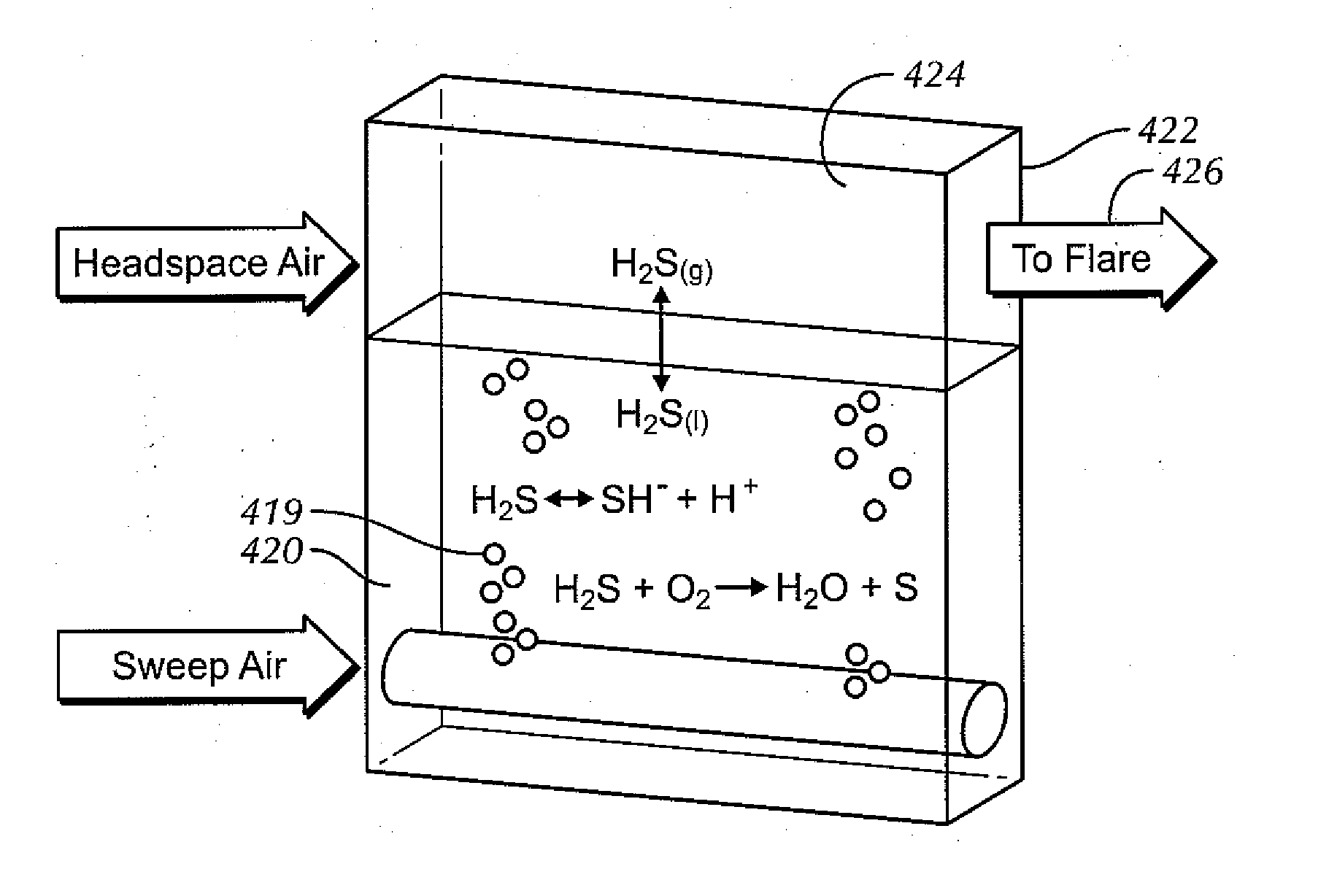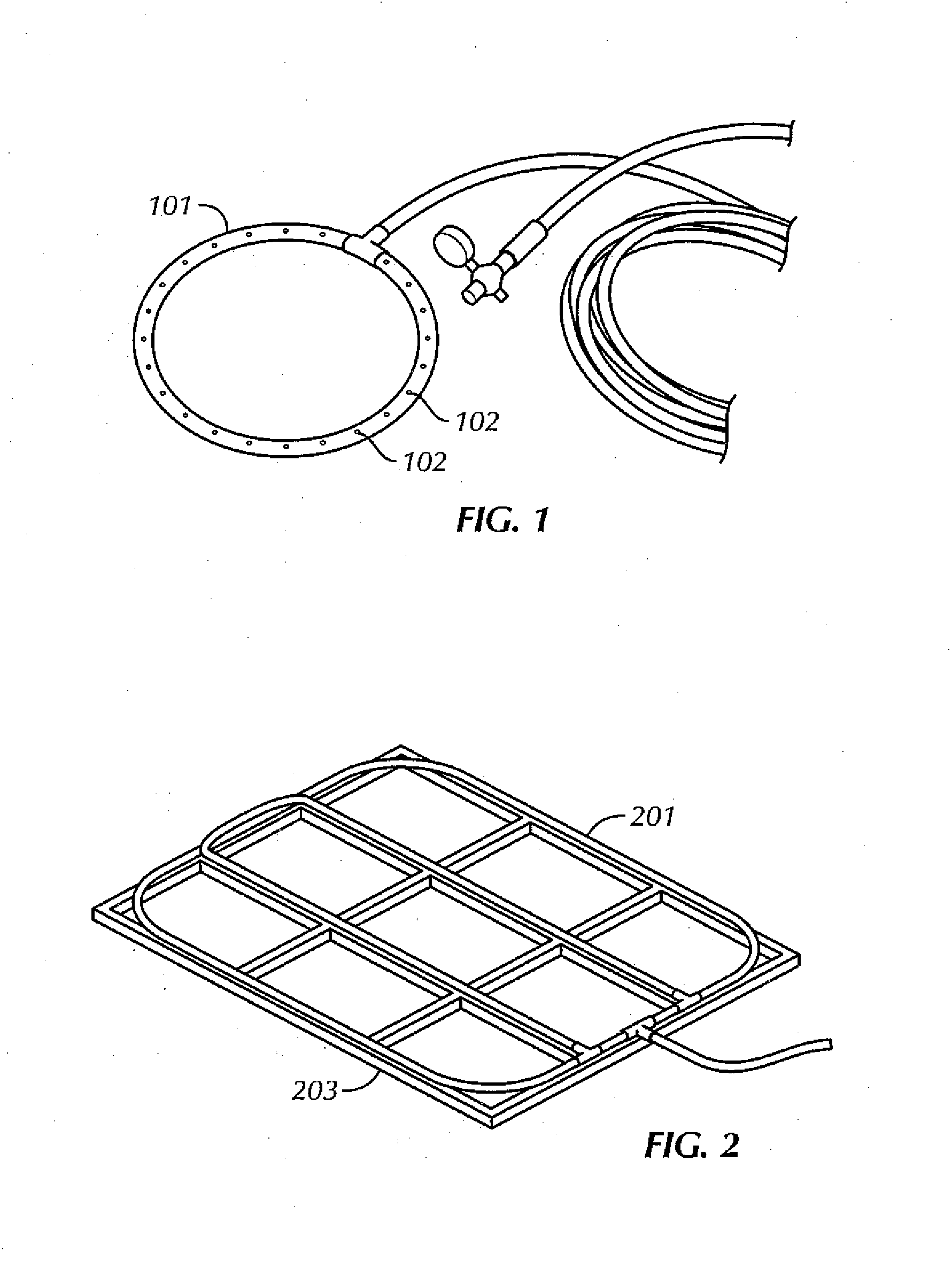Aerated degasser
a well fluid and aerated technology, applied in the direction of liquid degasification, separation process, wellbore/well accessories, etc., can solve the problems of sulfide in the well fluid, sulfide contamination oil from the well fluid may become associated or absorbed, and disposal a problem
- Summary
- Abstract
- Description
- Claims
- Application Information
AI Technical Summary
Problems solved by technology
Method used
Image
Examples
example 1
[0081] As a first example, consider the case where no sparging occurs. Assume a total of 20 m3 of well fluid having a pH of 2.0 to be treated and a feed rate of the well fluid is 800 L / min. Initially, the well fluid flows into a process tank having a volume of 8,000 L. Once 6 m3 of well fluid has poured into the process tank, the well fluid will begin to spill over the weir. The well fluid in the process tank and the well fluid that spills over the weir retain 1,000 mg / L dissolved sulfides. Accordingly, no sulfur is removed from the well fluid. FIG. 8 shows the relationship between well fluid in the process tank, the well fluid that spills over the weir, and the motes of sulfur gas.
example 2
[0082] In another example, 6,000 L well fluid with a pH of 2.0 contained in a 8,000 L process tank is sparged with “zero air,” that is, air that contains no oxygen, at a rate of 100 L / min. Sparging the well fluid with zero air at 100 L / min results in modest hydrogen sulfide stripping. As shown in FIG. 9, spent well fluid in the process tank is continuously stripped of hydrogen sulfide, but even after 100 minutes only a level of about 580 mg / L sulfur is reached for the 6 m3 of well fluid retained in the unit.
example 3
[0083] In another example, 6,000 L of well fluid with a pH of 2.0 contained in a 8,000 L process tank is sparged with zero air at a rate of 1,000 L / min. The amount of sulfur reduced over time as a result of the sparging is shown in FIG. 10 for both the well fluid in the process tank and the well fluid that spills over the weir. Sparging the well fluid with zero air at 1,000 L / min results in larger reduction in sulfur content than sparging the well fluid with zero air at 100 L / min.
PUM
| Property | Measurement | Unit |
|---|---|---|
| pressure | aaaaa | aaaaa |
| pressures | aaaaa | aaaaa |
| equilibrium concentration | aaaaa | aaaaa |
Abstract
Description
Claims
Application Information
 Login to view more
Login to view more - R&D Engineer
- R&D Manager
- IP Professional
- Industry Leading Data Capabilities
- Powerful AI technology
- Patent DNA Extraction
Browse by: Latest US Patents, China's latest patents, Technical Efficacy Thesaurus, Application Domain, Technology Topic.
© 2024 PatSnap. All rights reserved.Legal|Privacy policy|Modern Slavery Act Transparency Statement|Sitemap



